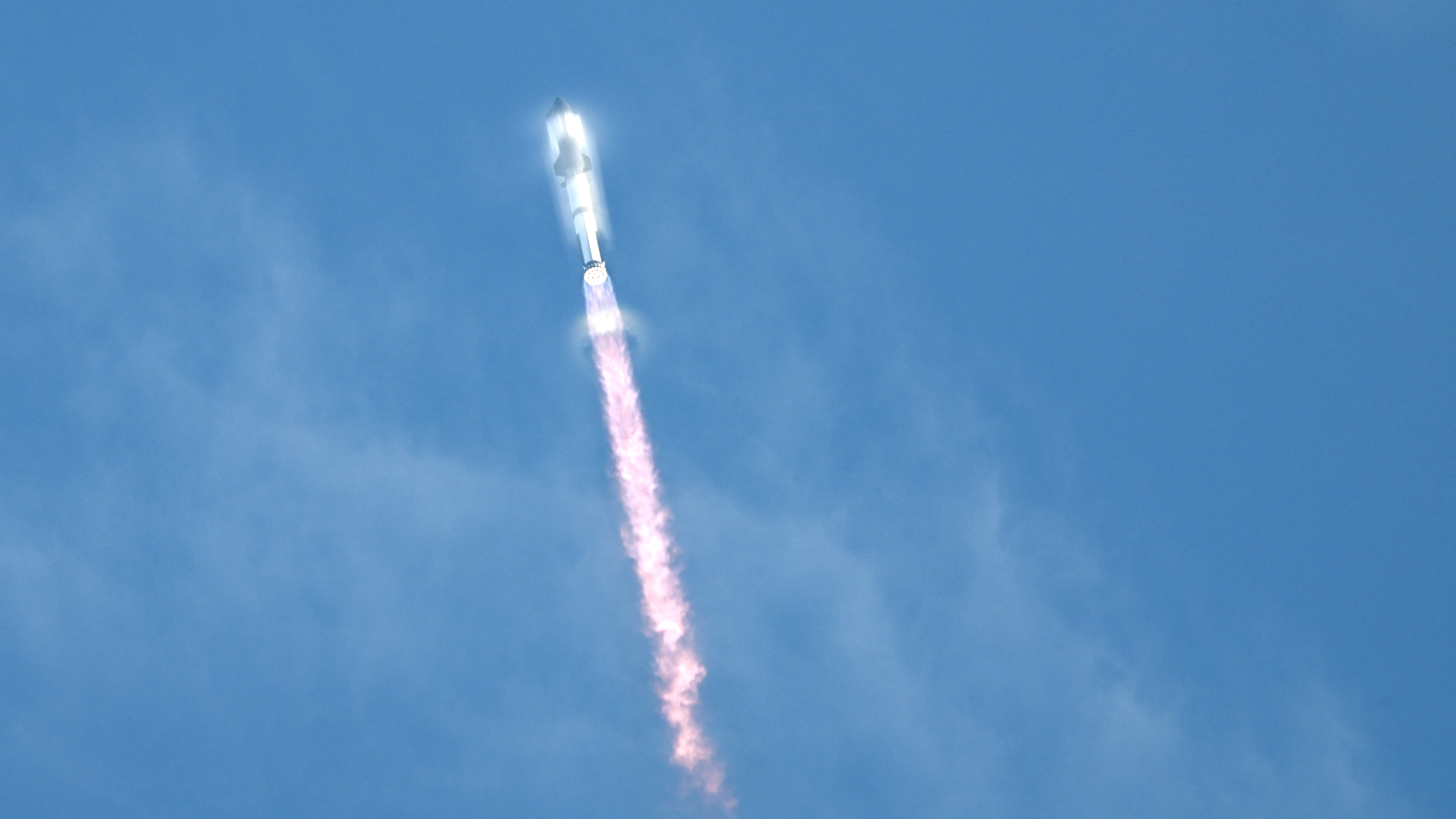SpaceX’s Starship has finally pulled off a successful test flight in a stunning reversal of fortunes for Elon Musk’s most ambitious rocket.
The uncrewed 403-foot-tall (123 meters) rocket, the largest ever built, blasted off from SpaceX’s Starbase at Boca Chica, Texas, at 7:30 p.m. EST on Tuesday (Aug. 26).
Starship completed a nerve-wracking, hour-long flight, reaching a maximum altitude of 124 miles (200 kilometers) above Earth’s surface, before its upper stage splashed down in the Indian Ocean. Earlier, after separation, the rocket’s Super Heavy booster landed in the Gulf of Mexico.
Ecstatic applause erupted as SpaceX’s engineering teams celebrated the rocket completing its journey. Unlike previous attempts, Starship was finally able to use its satellite deployment system to drop mock Starlink satellites into space for the first time.
Much more was riding on this 10th test launch than dummy satellites. The gargantuan rocket is key to SpaceX majority shareholder Elon Musk’s ambitions to transport crewmembers, spacecraft, satellites and cargo into orbit around Earth — and eventually to the moon and Mars. SpaceX has a $2.9 billion contract with NASA to carry astronauts to the lunar surface as early as 2027.
The latest test flight, coming two days later than planned due to issues with Starbase’s ground systems and bad weather, marks a comeback for the company after a string of failures.
Starship’s ninth launch fell short of its target, while its eighth and seventh launches ended in dramatic explosions that hurled fiery debris across the Caribbean. In June, a Starship rocket also exploded on the launch pad while preparing for a flight. Last year, scientists revealed that a previous explosion, during the second test flight in November 2023, temporarily ripped a “hole” in the atmosphere.
“Congratulations to @SpaceX on its Starship test. Flight 10’s success paves the way for the Starship Human Landing System that will bring American astronauts back to the Moon on Artemis III,” NASA’s acting administrator Sean Duffy wrote on X following the flight. “This is a great day for @NASA and our commercial space partners.”
Related: ‘Catastrophic’ SpaceX Starship explosion tore a hole in the atmosphere last year in 1st-of-its-kind event, Russian scientists reveal
Propelled by a record-breaking 16.5 million pounds (7.5 million kilograms) of thrust from its 33-engine Super Heavy booster rocket, Starship can carry 10 times the payload of SpaceX’s current Falcon 9 rockets.
Watch On
Starship is designed primarily with cheap and efficient manufacturing in mind, using inexpensive stainless steel for its construction and methane — which SpaceX says can be collected on Mars — to power the rocket.
Yesterday’s mission was intended as a test for the ship’s new heat shield tiles and its ability to deploy payloads in orbit, alongside many other upgrades to improve on previous flights. It was also a demonstration of SpaceX’s “fail fast, learn fast” mantra, where test rockets are flown beyond their technical limits — the company treats failures as opportunities to gather more data.
Despite the 10th launch’s success, signs of stress on the rocket were evident during flight, with the rocket’s flaps catching on fire and swinging back and forth.
The rocket’s hexagonal heat shield tiles were also licked by fire during the rocket’s blazing-hot supersonic reentry. They were developed as a fully reusable orbital heat shield, a historical departure from traditional shields that take refurbishment after each flight. For example, NASA’s retired Space Shuttle took nine months to refurnish its heat shields between flights, Musk noted during a webcast on Monday (Aug. 25.)
“What we’re trying to achieve here with Starship is to have a heat shield that can be flown immediately,” he said.
The speed of the rocket’s development is driven by SpaceX’s NASA contract, which will see a modified version of the craft take humans to the moon as part of its Artemis programme in 2027. Musk has also suggested that the rocket could start uncrewed test flights to Mars in the next 12 months.
Yet remaining technical challenges could force these key dates to slip. SpaceX still needs to demonstrate that the rocket can be refueled in orbit, a key test before it can carry out missions further into space.
